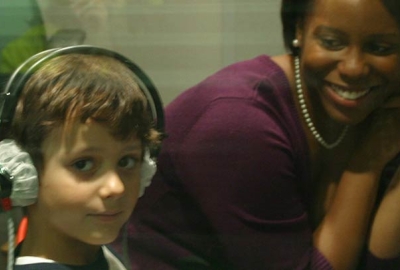
Research
Below are brief descriptions of the current studies in the Small Talk Child Language Development & Disorders Lab. Parents who are interested in enrolling their children in any of these studies can contact Dr. Reuterskiöld.
Students interested in participating in all aspects of the research process, such as planning, creating protocols, data collection and analysis, as well as preparation for dissemination of results, are welcome to contact Dr. Reuterskiöld and participate in weekly lab meetings.
View a list of current and previous collaborators in research.
Statistical Properties of Language and Word Learning in Autism
Christina Reuterskiöld, Iris Fishman, Emily Matula
This project is funded by the New York University Research Challenge Fund (URCF).
In this study, we explore how statistical patterns of spoken and written language affect word learning in children with autism. Children with autism demonstrate social impairments, which have been attributed to their language learning difficulties (e.g., Tager-Flusberg & Caronna, 2007). One recent study revealed that the presence of a written word, while also hearing a new word, facilitates word learning in children with autism to a higher degree than in children with typical development (Lucas & Norbury, 2014). Spoken words consist of different speech sound combinations and written words consist of different letter combinations. In this study, we explore the impact of the frequency of sound and letter combinations for word learning in autism. We use an eye-tracking device, which monitors a person’s visual attention in real time, to provide us with eye gaze movements and eye gaze fixation times. Visual attention in response to auditory stimuli is closely time-locked; the use of eye tracking can provide a measure of online language processing as a word or sentence unfolds in real time, allowing us to explore how children with ASD make decisions and resolve ambiguities in word learning compared to TD children.
Technology and Storytelling: Intervention for children with Autism
Christina Reuterskiöld, Iris Fishman, Haley Addis, Tech Kids Unlimited
This project is funded by the Community Collaborative Award from New York University Steinhardt School of Culture, Communication & Human Development.
This is an intervention study conducted in a partnership with Tech Kids Unlimited, a not-for-profit technology-based educational organization. Children with autism receive intervention over five weeks by trained Speech-Language Pathology students and students from NYU Tandon School of Engineering. The intervention targets story-telling skills (story content and linguistic form) and communication while children are also taught to use different types of software. Outcomes will provide the foundation for the design of a new approach for language intervention for school-age children with autism.
Rhyme Awareness in Children with Cochlear Implants: Investigating the Effect of a Degraded Auditory System on Auditory Processing, Language and Literacy Development
Linye Jing, Katrien Vermeire, Christina Reuterskiöld
In collaboration with NYU Langone Cochlear Implant Center
This project is funded by an Emergent Research Grant from the Hearing Health Foundation.
A pilot study was conducted focusing on rhyme recognition in children who were bilaterally implanted before the age of two. The stimuli were carefully controlled in terms of statistical probability of rhyming words as well as perceptual saliency of consonant sounds in the target words. Preliminary results showed that the children with CI had weaker rhyme awareness skills than children with typical hearing. Results also indicated that regardless of hearing status, children’s absolute vocabulary size supports their rhyme awareness skills.
We have refined the study and will be collecting additional data in collaboration with the Langone Medical School Cochlear Implant Center during the academic year of 2017. Outcomes will show if auditory deprivation during the first two years influences phonological awareness skills at age 4-8 and if these children show similar patterns of sensitivity to statistical patterns of language as children with normal hearing. It will also shed light on the importance of speech input during a child’s first years for the development of phonological processing and vocabulary skills. This knowledge will lead to improvements in targeted intervention and educational approaches for children with cochlear implants.
Executive Function and Language Processing in Autism: What does eye gaze tell us?
Estef Aydillo, Emily Matula, Christina Reuterskiöld
This study is funded by Xunta de Galicia Doctoral Research Grant for Ph.D. studies.
Is it possible to give children explicit metacognitive strategies to improve their performance on a dual processing task? The proposed study investigates whether performance on a dual processing task (comprehension and memory) in children with Autism Spectrum Disorder (ASD) and Attention Deficit Hyperactivity Disorder (ADHD) will improve when children are explicitly taught strategies for support. Children with ASD tend to show a relative weakness in working memory, processing speed, and planning (Foley et al., 2012; Assouline et al., 2008, Assouline et al., 2012). Children will participate in a dual processing task (reading sentences on a screen, answering a yes/no question and remembering the last words in a set of sentences). Children will be taught strategies for visualization to improve their performance. Eye gaze will be tracked to allow us to draw conclusions of online processing.

